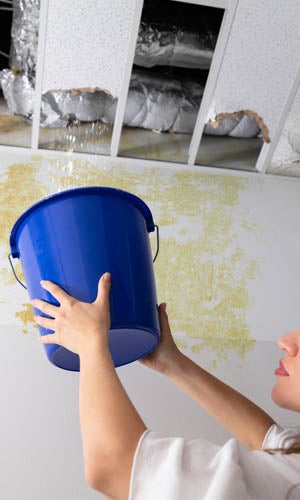Overview To Water Leakage Detection At Home
Overview To Water Leakage Detection At Home
Blog Article
The content below involving Detecting hidden plumbing leaks is fairly engaging. You should check it out.

Early discovery of dripping water lines can reduce a possible disaster. Besides conserving you money, it will certainly lessen the irritation and also disappointment. The minute you find a leak, calling your plumber for repair services is the best service. Some little water leaks may not be visible. If you can not identify it with your naked eyes, right here are some hacks that aid.
1. Analyze the Water Meter
Checking it is a proven means that aids you find leakages. If it moves, that indicates a fast-moving leakage. This suggests you may have a sluggish leak that might even be underground.
2. Examine Water Intake
If you find sudden adjustments, despite your intake being the exact same, it means that you have leakages in your plumbing system. A sudden spike in your costs indicates a fast-moving leakage.
A consistent increase every month, even with the exact same behaviors, reveals you have a sluggish leak that's also slowly rising. Call a plumber to thoroughly check your home, specifically if you really feel a cozy area on your floor with piping underneath.
3. Do a Food Coloring Examination
30% comes from toilets when it comes to water intake. Examination to see if they are running correctly. Drop flecks of food shade in the tank as well as wait 10 mins. If the color somehow infiltrates your dish throughout that time without flushing, there's a leakage between the storage tank as well as dish.
4. Asses Exterior Lines
Don't forget to examine your outdoor water lines too. Test spigots by connecting a garden pipe. Must water leak out of the link, you have a loosened rubber gasket. Change this and also guarantee all connections are tight. If you've got a sprinkler system, it will help get it professionally examined and maintained each year. One tiny leak can waste lots of water and also surge your water expense.
5. Examine the circumstance and evaluate
Home owners must make it a practice to examine under the sink counters as well as even inside cupboards for any bad odor or mold and mildew growth. These two warnings indicate a leakage so timely focus is needed. Doing routine examinations, even bi-annually, can conserve you from a major trouble.
Inspect for stainings and also weakening as many home appliances as well as pipelines have a life expectancy. If you think leaking water lines in your plumbing system, don't wait for it to intensify.
Early discovery of dripping water lines can minimize a potential disaster. Some tiny water leaks might not be visible. Inspecting it is a guaranteed method that helps you find leaks. One small leakage can squander bunches of water and also spike your water bill.
If you believe dripping water lines in your plumbing system, don't wait for it to rise.
How to Know If Your Home Has a Hidden Leak
Water Meter Reveals Inexplicable Water Usage
If you’d like to test whether or not there’s a leak somewhere in your home, you can do this using your water meter. Here is how to conduct the test:
Don’t use any water in your home for at least 30 minutes; this also means not turning on faucets or water-using appliances.
Go outside, and check your water meter for activity.
If your water meter shows that there was activity, even though no one was using any water, this proves that there is a leak in your home.Visible Mold or Mildew Growth
Leaks behind walls create moist, dark environments that allow mold and mildew to grow and thrive. Eventually, you might see mold growth forming on the wall closest to a hidden leak.
If mold is growing in an area that receives a high amount of moisture, such as a bathroom, it may simply be an indication that better ventilation is needed. However, if you see mold growth on a wall or the ceiling in an area where you would not expect, you probably have a hidden leak.
Musty, Mildew Odor
Sometimes you might not be able to see the mold or mildew that is growing as a result of a leak. However, the smell can give the problem away just as easily. If you catch a whiff of something musty, there’s a good chance that old water is collecting somewhere in your home that you can’t see.
Stained/Warped Walls, Ceilings, or Floors
When your home soaks up water, a variety of red flags can become visible, including ceiling stains, bubbling drywall, warped walls, and sagging floors. While these issues can be caused by excess humidity, they can also be signs that a pipe or plumbing connection has started leaking behind your walls.
Inexplicably High Water Bill
After a while, you get a general sense for what your water bill should be. If you own a pool or sprinkler system, your bill will tend to be higher during summer. However, if you receive a water bill that seems especially high, and you can’t figure out what caused it, then you may have a hidden leak somewhere that’s increasing your bill.
https://www.plumbingjoint.com/blog/2019/july/how-to-know-if-your-home-has-a-hidden-leak/

I was shown that report about Locating water leaks through an acquaintance on our other web address. Do you know another individual who is serious about the topic? Be sure share it. I thank you for reading our article about Locating water leaks.
Report this page